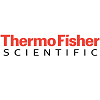Phd Candidate - Bordeaux, France - Thermo Fisher Scientific
Description
Title:
"Real-time characterization of anisotropic carbon-based technological fibers, films and composites" (RELIANCE Network).
More information can be found by following this link:14 PhD positions in real-time characterization for materials engineering | EURAXESS )
Mobility Rules
- Researchers must not have resided or carried out their main activity (work, studies, etc.) in the country of the recruiting beneficiary for more than 12 months in the 36 months immediately before their recruitment date.
Objectives:
Detect coarse defects by optical microscopy methods. Detect manufacturing defects by X-ray CT. Develop software that will co-register different instruments and the data they collect. Investigate defects located by X-ray CT at higher resolution by electron microscopy. Adapt a Deep learning architecture, trained using the labialized data based on multi-modal acquisitions.
Expected Results:
The aim will be to develop a novel "multiscale and multi-modal correlative methodology, combining optical, X-Ray and electronic imaging to locate and probe manufacturing defects in composite materials providing a rich picture of their character across a wide range of length scales.
The Fellow will develop the AVIZO/ATHENA software environment for in-line digital integration of the correlative approach, allowing a fast and automated quality control of composites-based materials systems.
Planned secondment(s): Host, supervisor, timing, length and purpose
- UoM, Phil Withers, M1215, training in optical, Xray and electron microscopy.
- UoM, Phil Withers, M2427, test and evaluation of prototype software for the control and acquisition of data.
Description
Multi-scale μCT observations of varying microstructure and defects, arise during manufacturing and if undetected can give rise to unexpected failure.
The can extend from a few tens of microns to a few hundreds of microns.These can lead to localized rupture/delamination at the macroscale and do not allow the true understanding of initiating processes which arise at the nanoscale and mostly at interfaces [- 4].
Destructive aspects of the experimental procedures used for defect detection, and the typology of observed defects and structural variations, do not currently allow the definition of empirical behavior laws, relating structural manufacturing variations to localized fiber distribution characteristics and the strain-stress fields.
Determination and validation of such relationships, combined with the usage of Deep Learning techniques, will allow industry to optimize the time-to-product for the manufacturing of new composite material, improve their reliability and will also reduce greatly the need for new experiments for similar systems [5].
In order to overcome these limitations, and within the framework of this study, a novel "multiscale and multi-modal correlative approach, combining optical-X-Ray and electronic imaging" is proposed with its corresponding new algorithmics.
AVIZO1/ATHENA2 software environment will be used for in-line and/or on-site digital integration of the correlative approach, where DL/ML capabilities will allow sample-and-process-dependent defect detection automation.
This combined methodology will allow a fast, effective, and automated quality control of composites-based materials systems both at R&D and Production stages.
Hence, after training, the algorithms can be employed to extract features from in-line scans of new samples in real time.
To correlate the extracted features with material properties and production parameters, we will use results of the modelling and simulation studies of digital twins, along with properties and parameters that can be extracted from the high-quality high-resolution off-line scans.
The challenge lies in the complexity of the samples to be analyzed.The features to be extracted may be varying largely across the samples and a small change in an overall feature may be hidden by the large variability, or by a sampling effect.
A crucial factor in overcoming these challenges is a combination of in-depth understanding of sample micro and nanostructure provided by TEM and FIB/SEM, and quantitative analysis of multi-scale tomographic data provided.
Prerequisite for the field of activity
MSc.
In one of the following fields:
- Applied Mathematics
- Theoretical and/or Computational Physics
- Theoretical computing
- Computational Materials Science
Preferred Prerequisites
- General knowledge of X-ray physics
- Knowledge of image and signal processing
- Knowledge of Python
- General knowledge of micro service and.
NET
- Knowledge of C ++ and/or C#
- General knowledge of software architecture
Plus d'emplois de Thermo Fisher Scientific
-
Pharmacien de Production
Bourgoin-Jallieu, France - il y a 3 semaines
-
Spécialiste Industrialisation
Bourgoin-Jallieu, France - il y a 3 semaines
-
Technicien de Maintenance nuit
Bourgoin-Jallieu, France - il y a 3 semaines
-
Intern
Courtaboeuf, France - il y a 5 jours
-
Intern - Digital Sales (France)
Illkirch-Graffenstaden, France - il y a 3 semaines
-
Cra (Level I)
Ivry-sur-Seine, France - il y a 2 semaines

